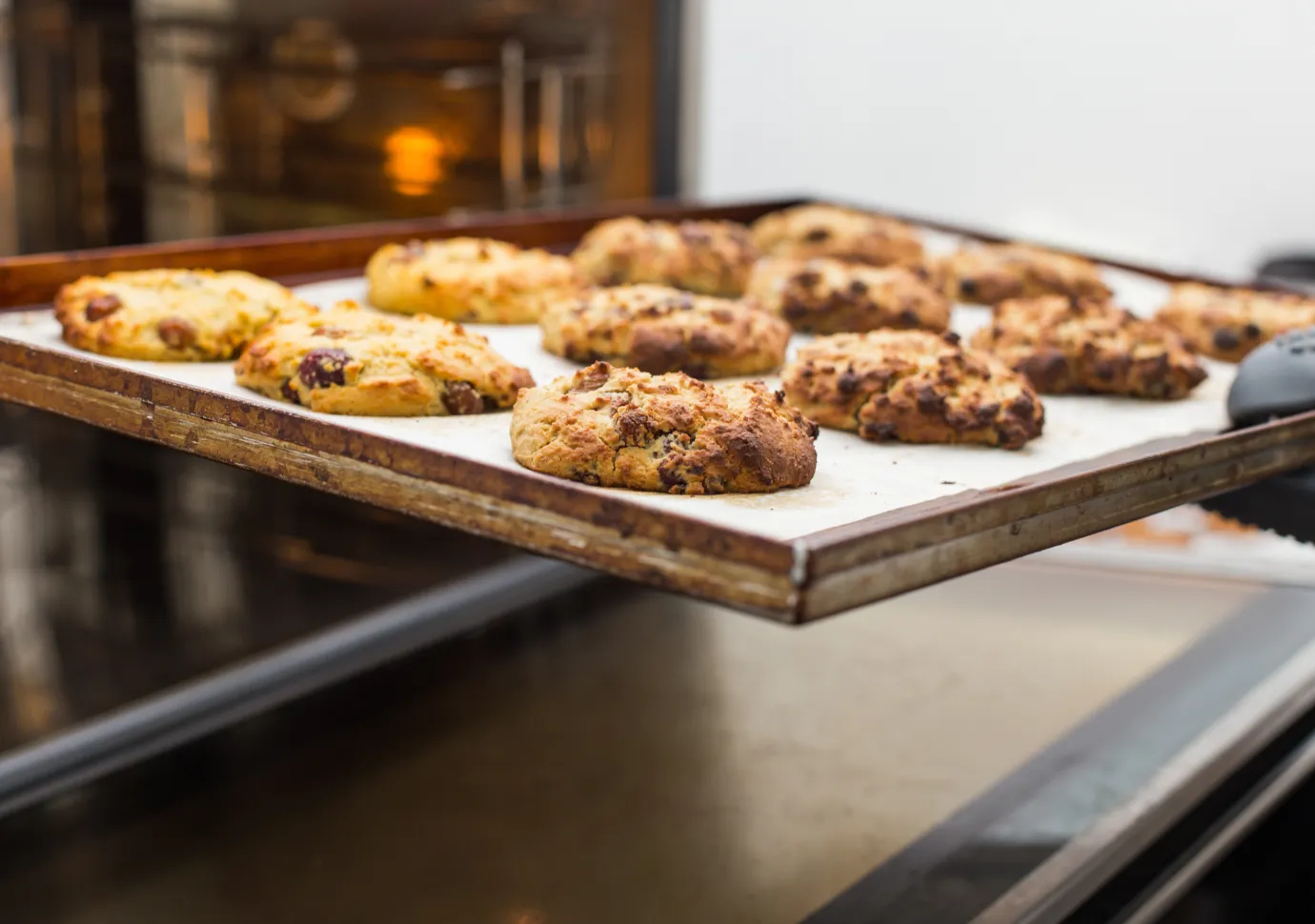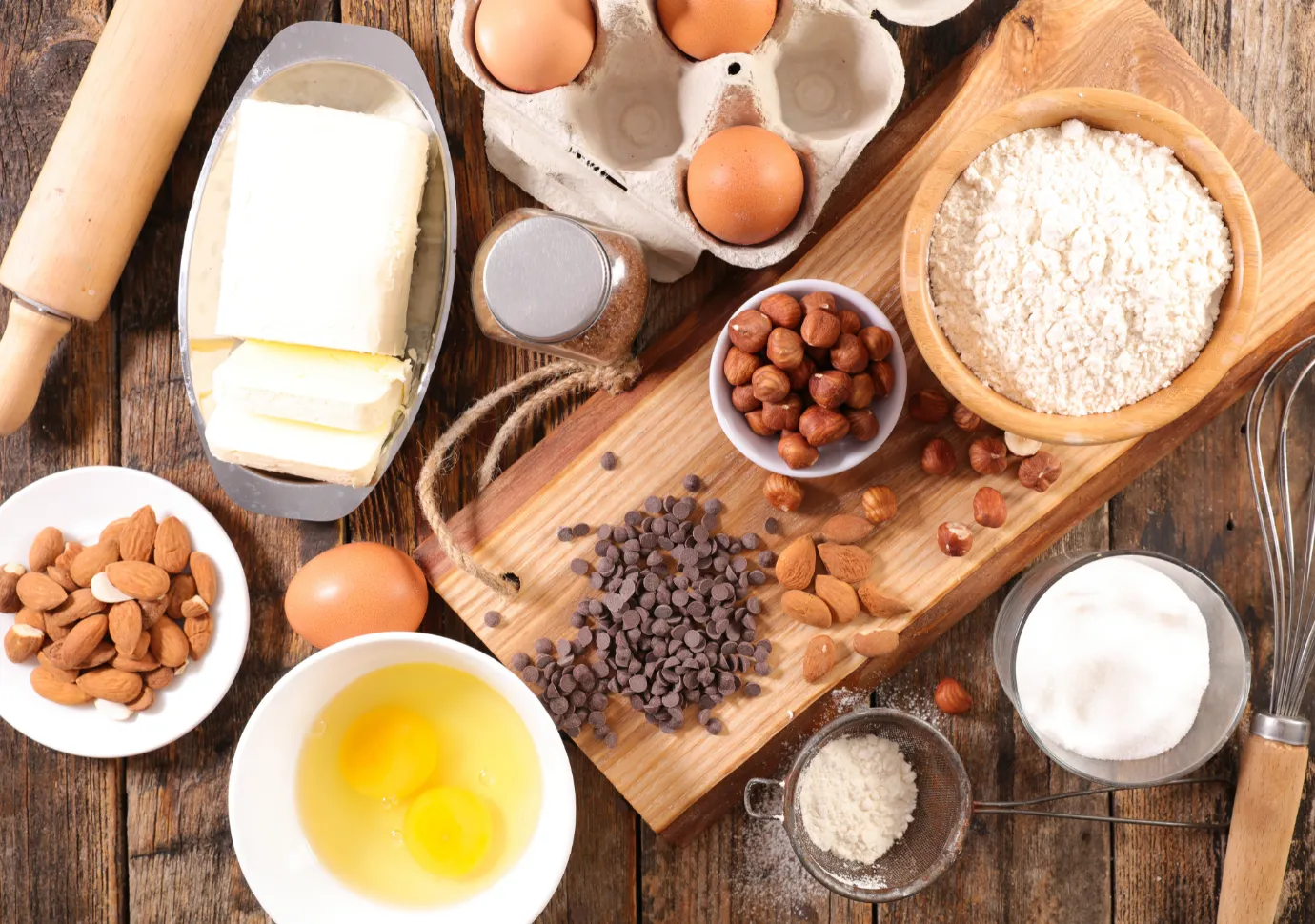
In the warm, comforting world of baking, the humble cookie stands out as a universal favorite, cherished by all ages and celebrated across cultures. Yet, not every batch emerges from the oven as envisioned. Sometimes, despite our best efforts, we’re left pondering, “Why are my cookies as hard as rocks?” Fear not, for this article embarks on a culinary quest to solve this perplexing mystery. Through a blend of science and art, we’ll uncover the secrets to achieving that coveted soft and chewy texture, sidestepping the pitfalls that lead to cookie disappointment. So, preheat your ovens, and let’s delve into the deliciously intricate world of cookie baking, ensuring your next batch is nothing short of perfection.
Understanding Cookies in the Kitchen
The Science Behind Baking Perfect Cookies
Baking is as much a science as it is an art. The path to perfect cookies lies in understanding the roles of ingredients and how they interact. Each component, from flour to sugar, eggs to butter, plays a pivotal part in texture, spread, and flavor. For instance, the gluten formed by mixing flour and water can be a double-edged sword; just enough lends structure, but too much, and you’re left with cookies tougher than a Monday morning.
Furthermore, the magic of chemical leaveners like baking soda and baking powder cannot be overstated. These unassuming powders puff up your cookies, giving them that desirable lightness. However, balance is key – too little, and your cookies won’t spread, too much, and they may collapse.
Common Issues with Cookie Texture
Hard cookies often result from a few culprits lurking in your baking process. Overmixing dough activates too much gluten, making your cookies tough. Likewise, a misstep as simple as measuring flour incorrectly – packing it too tightly, for instance – can tip the scales from soft to stone-like.
Oven temperature also plays a critical role; too hot, and your cookies may set too quickly, locking in a harder texture. And let’s not forget the aftermath – improper storage can sap the moisture right out of your cookies, turning them into mini rocks over time.
In the quest for the perfect cookie, understanding these factors is just the beginning. Armed with knowledge and a sprinkle of patience, you’re well on your way to baking bliss. And, for those eager to dive deeper into the world of gluten and its impact on baking, King Arthur Baking’s guide to understanding gluten is an invaluable resource. So, let’s roll up our sleeves, whisk in hand, and embark on this baking adventure, ensuring our cookies are always soft, chewy, and utterly irresistible.
Factors Influencing Cookie Texture
Ingredients and Their Roles
A cookie’s journey to perfection begins with its ingredients, each bringing its unique characteristics to the mix. Flour, the backbone of any cookie, determines the structure. High-protein flours lead to a firmer texture, so opting for all-purpose flour can strike the right balance between tenderness and structure. Sugar, more than just a sweetener, affects moisture. White sugar promotes crispiness, while brown sugar, with its molasses content, retains more moisture, leading to softer cookies.
Fats play a crucial role too. Butter, revered for its flavor, also contributes to a tender crumb. However, the melting point of butter can cause cookies to spread too thin, potentially leading to a crispier edge than desired. On the flip side, shortening has a higher melting point, which helps cookies maintain their shape, but it might compromise on flavor and tenderness.
Baking Perfect Cookies
The mixing stage is critical. The key here is to mix just until the ingredients are combined. Overzealous mixing can lead to too much gluten development, a common pitfall for those hard cookies. Additionally, the temperature of your ingredients can significantly affect the outcome. Room temperature butter is easier to cream with sugar, creating air pockets that lend a light, tender texture to the final product.
Oven temperature is another pivotal factor. An oven that runs too hot can set the exterior of the cookies too quickly, preventing the insides from becoming soft and chewy. Conversely, an oven that’s not hot enough might not allow the cookies to set properly, leading to an undesirable texture.
Environmental Factors
You might not consider the environment as a factor in baking, but humidity plays a silent role in the texture of your cookies. In high humidity, cookies can absorb excess moisture from the air, potentially making them too soft or, paradoxically, leading to a harder texture as they overcompensate and dry out. The solution? Airtight storage is key to maintaining that just-right chewiness.
Proper storage also helps preserve the desired texture. Cookies stored in a container that lets in air will quickly become stale and hard. To keep them soft, baking perfect cookies, an airtight container, possibly with a slice of bread or an apple wedge to maintain moisture, can work wonders.
As we navigate the nuanced world of cookie baking, understanding these factors empowers us to steer clear of the pitfalls that lead to disappointing textures. Whether it’s adjusting the ratio of ingredients, fine-tuning our mixing technique, or mastering the art of storage, each step brings us closer to achieving cookie nirvana. And for those seeking to delve deeper into the art of mixing and its effects on baking outcomes, Food52’s exploration of cookie science offers enlightening insights into how each decision impacts the final product. With these guidelines in hand, we’re well-equipped to bake cookies that not only taste divine but boast the perfect texture, every single time.
Solving the Hard Cookie Mystery
Common Mistakes and How to Avoid Them
Even the most seasoned bakers can fall prey to the common mistakes that lead to hard cookies. One of the most prevalent errors is overmixing the dough. Once the flour is added, a gentle hand is crucial. Overmixing at this stage activates the gluten in the flour more than necessary, leading to tough cookies. The trick? Mix just until the ingredients are incorporated, no more.
Incorrect measurement of ingredients is another frequent misstep. Baking is a science that demands precision. Too much flour can absorb too much moisture, leaving your cookies dry and hard. Using a kitchen scale for accuracy or the spoon-and-level method for measuring flour can make all the difference in achieving the perfect texture.
Overbaking is a surefire way to end up with cookies that could double as hockey pucks. Even a couple of minutes too long in the oven can cause cookies to lose their moisture and become hard. Keep an eye on your cookies as they bake and remember that they’ll continue to cook slightly on the baking sheet after being removed from the oven. Pulling them out when they’re just set but still soft in the middle is key.
Expert Tips for Perfectly Soft Cookies
Achieving the dreamy softness in cookies that everyone craves is within reach with a few expert tips. First, consider adjusting the ratio of brown sugar to white sugar. Baking perfect cookies Brown sugar contains molasses, which adds moisture and can help keep your cookies softer for longer. Incorporating more brown sugar into your recipes can lend a chewier texture to the final product.
Another tip is to underbake your cookies slightly. This might seem counterintuitive, but removing cookies from the oven when they’re just barely done allows them to finish cooking from the residual heat without becoming hard. They should look a bit underdone in the center when you take them out. As they cool, they’ll set to the perfect consistency.
Proper cooling and storage techniques can also significantly affect cookie texture. Cooling cookies on a wire rack helps prevent them from becoming soggy, while storing them in an airtight container keeps them soft and chewy. If you find your cookies have hardened, placing a slice of bread in the container can add moisture back into the cookies, reviving their soft texture.
Tackling the hard cookie conundrum involves a delicate balance of art and science. From the careful measurement of ingredients to the nuanced control of the baking process, each step is pivotal in crafting the perfect batch. Remember, baking is as much about the journey as it is about the destination. Embrace the process, learn from each batch, and soon, hard cookies will be nothing but a distant memory.
Advanced Baking Insights
The Role of Chemical Leaveners
The alchemy of baking reaches its peak when we talk about chemical leaveners, such as baking soda and baking powder. These ingredients are not just mundane powders but catalysts of the magical puff that gives cookies their lift and texture. Understanding their distinct roles and how they interact with other ingredients can elevate your cookie game to new heights.
Baking soda, a base, requires an acid to activate it and produce the carbon dioxide gas that leavens cookies. Ingredients like brown sugar, yogurt, or lemon juice can fulfill this role. When perfectly balanced, baking soda not only lifts the cookie but also browns it beautifully. However, an excess can leave a soapy aftertaste and affect the texture adversely.
Baking powder, on the other hand, is a complete leavening agent, containing both the base (baking soda) and the acid needed for the reaction. It’s perfect for recipes that lack acidic components. Double-acting baking powder goes a step further, producing gas upon mixing with wet ingredients and then again during baking. This dual-action ensures a uniform rise, essential for cookies that are evenly soft and airy.
Alternative Ingredients for Special Diets

Baking inclusively means adapting recipes to cater to various dietary needs without compromising on taste or texture. Gluten-free and vegan alternatives can be particularly challenging when striving for that perfect cookie softness.
For gluten-free baking, the key lies in the blend of flours. A mix of rice flour, potato starch, and xanthan gum can barking perfect cookies mimic the structure-providing properties of gluten, ensuring your cookies don’t crumble under pressure. Almond and coconut flour are also popular for their flavor and nutritional profile, though they require careful balancing to avoid a dry or dense outcome.
Vegan baking substitutes aim to replicate the moisture and binding qualities of eggs and the richness of butter. Flaxseed or chia seeds mixed with water create a gel that excellently binds the ingredients, while coconut oil or vegan butter alternatives can provide the desired fat component. Remember, each substitute behaves differently, so some experimentation might be needed to find the perfect match for your recipe.
Adjustments for high altitude baking are also crucial. Reduced air pressure at higher elevations can cause cookies to spread too much and dry out. Increasing the oven temperature slightly and reducing the baking time can help. Additionally, adjustments to the amounts of flour, liquid, and leavening agent can counteract the effects of altitude, ensuring your cookies come out soft and chewy, even from the heights of mountain living.
As we explore these advanced baking insights, remember that every tweak and adjustment is a step on the path to mastering the art of cookie baking. Whether it’s playing with chemical leaveners to achieve the perfect rise or adapting recipes to welcome all dietary preferences, each effort brings us closer to the ultimate goal: cookies that bring joy and satisfaction to every palate.
FAQs Section About Baking Perfect Cookies
As we journey through the art of baking cookies, numerous questions arise, reflecting the curiosity and eagerness of bakers to perfect their craft. Let’s tackle some of the most common queries, providing clarity and confidence as you continue to explore the delightful world of cookie baking.
Why do my cookies always turn out hard?
The culprit behind hard cookies often lies in the baking basics—overmixing the dough, incorrect measurement of ingredients, or overbaking. Each of these can lead to excessive gluten development, reduced moisture, and ultimately, a harder texture. Paying close attention to mixing times, accurately measuring ingredients, and adhering to baking times can turn the tide, ensuring your cookies remain soft and inviting.
How can I make my cookies chewier or softer?
Achieving chewier or softer cookies is a balancing act of ingredients and techniques. Incorporating more brown sugar, which contains molasses, can help retain moisture, leading to a softer texture. Underbaking cookies slightly allows them to continue cooking from residual heat without becoming hard. Additionally, using a higher ratio of egg yolks to whites can increase fat content, contributing to a richer, chewier texture.
Does the type of sugar I use affect cookie hardness to baking perfect cookies?
Absolutely! The type of sugar used can significantly impact the texture of your cookies. White sugar, Due to its lower moisture content, tends to produce a crisper texture. Brown sugar, baking perfect cookies with its inherent molasses, retains more moisture, resulting in softer, chewier cookies. Experimenting with the sugar ratios in your recipe can help you find the perfect balance for your texture preferences.
Conclusion
As we draw the curtains on our comprehensive journey through the world of baking the perfect cookie, we’ve traversed the science of ingredients, the finesse of techniques, and the warmth of the oven’s embrace. From understanding the critical role of each component to mastering the art of mixing and baking, we’ve uncovered the secrets that transform simple ingredients into sublime treats.
Baking cookies is more than just a culinary endeavor; it’s a form of expression. A sprinkle of joy, and a connection to countless memories and future moments of delight. The insights and tips shared throughout this guide serve as your map to the treasure trove of perfect cookies—soft, chewy, and bursting with flavor.
Remember, the heart of baking lies in the joy of experimenting. The beauty of sharing, and the satisfaction of continuous learning. Each batch, whether a triumph or a learning curve, is a step closer to mastering the art of cookie baking. Embrace the journey, savor the successes, and cherish the smiles your cookies bring to faces around you.
In the end, the quest for the perfect cookie is a journey that never truly ends. It evolves with each oven preheated, each cookie sheet lined, and every last crumb savored. So, preheat your ovens, gather your ingredients, and let the sweet aroma of baking cookies fill your home once again. After all, in the grand tapestry of baking, each cookie is a masterpiece, and every baker is an artist. Here’s to countless batches of cookies, each one a delicious testament to the art and science of baking. Happy baking!

1 thought on “Master the Art of Perfect Cookies: A Comprehensive Baking Guide”